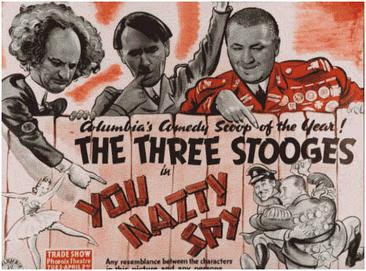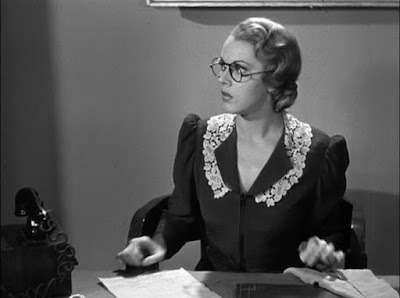Runaway Brain (1995) Starring the voices of: Wayne Allwine, Russi Taylor, Kelsey Grammer, Jim Cummings, Bill Farmer Directed by Chris Bailey. Story by Tim Hauser. Produced by Ron Tippe. Runtime: 7 minutes. U.S. Color. Animated, Comedy, Horror.
Mickey Mouse is the face of the Walt Disney Company, and prominent at attractions like Disneyland, but he hasn’t been so prominent in Disney animated works. In 2013, he appeared in Get A Horse, a 3D animated short that recalled his past glories on the silver screen. But prior to that, he hadn’t appeared in a theatrical animated short since Runaway Brain (1995), a period of 18 years.
Mickey made his debut in Steamboat Willie (1928), a Disney homage of sorts to Buster Keaton’s Steamboat Bill, Jr. (1928). He would go on to be featured in 130 films including Plane Crazy (1929), The Band Concert (1935), and Fantasia (1940). But things came to a stop after The Simple Things (1953). For whatever reason, it would be thirty years before his next animated short, Mickey’s Christmas Carol (1983). The Prince and the Pauper (1990) would follow and it would be 5 more years before Runaway Brain.
It’s not that Mickey needs any sort of introduction, despite his time away from theaters. He is iconic in that way.
The film opens on a rainy night. Mickey (Wayne Allwine), with his dog Pluto (Bill Farmer) by his side, is doing what a lot of guys might be doing, playing a video game. This one appears to be based on Snow White and the Seven Dwarfs (1937), with the wicked witch throwing apples on the Dwarfs. His gameplay is interrupted when Minnie (Russi Taylor) comes home.
 |
| Mickey (Wayne Allwine) is shown to be a video game addict. |
She figures, correctly as it turns out, that Mickey has forgotten the anniversary of their first date. Pretending he hasn’t, he shows her a newspaper ad for Miniature Golf, but Minnie only sees the ad below that one, a trip to Hawaii. Happy to know he has planned something special, Minnie leaves. It is only then that Mickey realizes that the trip will cost $999.99, which is obviously more than he has.
 |
| Minnie (Russi Taylor) is disappointed that Mickey has forgotten the anniversary of their first date. |
Pluto comes to the rescue by finding a want ad that promises to pay $999.99 for one day’s mindless work. Thinking he’s hit a home run, Mickey goes to apply. But when he arrives at the address at 1313 Lobotomy Lane, he falls through a trap door and into a science lab where he is strapped down in a chair, unable to move.
 |
| Pluto (Bill Farmer) shows Mickey a help wanted ad that promises the money he needs. |
He is interviewed by the primate-like Dr. Frankenollie (Kelsey Grammer) who decides Mickey will do and introduces him to his co-worker, Julius (Jim Cummings), a twenty-foot tall creature. Dr. Frankenollie wants Mickey’s brain, which we see extends into his ears, for Julius. So in what has become a cliché of sorts, he throws a switch to move Mickey’s thoughts and memories into Julius.
 |
| Dr. Frankenollie (Kelsey Grammer) decides Mickey is perfect for his needs. |
There is an explosion, which we find out burns the doctor into a crisp. Mickey discovers this when now in Julius’ body he tells the doctor to change him back and the doctor’s body falls away like so much ash on the end of a cigarette.
 |
| The doctor sets off the transference with a click of a button. |
With Julius’ brain in it, Mickey’s body turns feral. When Mickey tries to explain that he needs to change back, he tries to get Julius to look at the photos in Mickey’s wallet, one of which is him as Steamboat Willie. But when Julius sees Minnie’s photo, he is smitten by her. Seeing her on the street entering a bikini shop, he runs down to get her. Minnie, of course, doesn’t see any difference in Mickey and hides the scanty bikini to save it for their vacation. But when Mickey in Julius’ body tries to save her, she thinks he is the monster.
 |
| With Julius' brain in his body, Mickey turns feral and even scares himself. |
Quickly, however, she realizes that he is her Mickey. In a King Kong-like move, he places her on a tall building where she will be safe and goes back to battle Julius. For a moment, Julius outsmarts Mickey and the two of them are sent falling towards the ground, but they land on electrical lines and the resulting charge sends their brains back to the right bodies.
 |
| Julius, back in his own body, clutches Mickey and Minnie even though they're sticking through a billboard. |
But the bounce back up from the wires sends them to the top of the building and thrusts all three through a large billboard advertising Hawaii. Mickey realizes he’s back into his own body, but he’s in Julius’ grasp. Minnie is in the other hand. Mickey manages to escape and tries to fight Julius with window cleaner gear before rescuing Minnie when she is dropped by Julius by swinging on a rope to catch her. Mickey uses the same rope to tie Julius to the hand of the hula dancer on the billboard. Julius is trapped like a yo-yo.
 |
| Minnie falls before Mickey rescues her. |
In the final scene, Mickey and Minnie are together on their way to Hawaii on a raft being pulled through the ocean by Julius with a photo of Minnie being used as the carrot on the stick to keep him swimming.
 |
| Mickey does manage to take Minnie to Hawaii aboard a raft. |
Produced by Walt Disney Animation France, the film was originally released in North America on August 11, 1995, accompanying A Kid In King Arthur’s Court, a live-action family-friendly retelling of Mark Twain’s A Connecticut Yankee in King Arthur’s Court and a remake of Disney’s own Unidentified Flying Oddball (1978).
After having been off the screen for five years, Mickey’s appearance in Runaway Brain didn’t meet with universal praise. Many otherwise Disney fans were turned off by the macabre nature of the short, especially when compared to the light tone of his previous shorts.
The short was re-released with 101 Dalmatians (1996), their live-action remake of the animated classic. But Disney asked theater owners to cut the short off all film prints and replace it with trailers for then-upcoming Disney films. Runaway Brain would later be released attached to George of the Jungle (1997), yet another live-action remake. The short would be nominated for the Academy Award for Best Animated Short at the 68th Academy Awards, ending up losing to A Close Shave (1995) from Aardman Animations and director Nick Park.
Watching the short, I wasn’t really bothered by its horror film undertones. I will admit that it is not something you’d expect from a Mickey Mouse animated short. But there is nothing in this short that you haven’t seen in other animated films, even when Dr. Frankenollie turning to ash is nothing new.
While most of the early animated shorts from the studios, including Disney, were never rated, they did include violence that feature films couldn’t have gotten away with because of the interpretation of the Production Code by the Hays Office.
The film’s use of imagery from movies like Frankenstein (1931) and King Kong (1933) seems to presume that its audience is already aware of these films. They’re a visual short-hand for science fiction and horror that allow the filmmakers, who only have seven minutes, to sort of cheat on their storytelling.
However, the film overall feels sort of disjointed to me. A derivative of other films, there is nothing really unique about it, that is there is nothing you haven’t seen before, with the possible difference seeing Mickey Mouse in this sort of film.
Kelsey Grammer, who was in the middle of his 20-year plus run playing Dr. Fraiser Crane on TV shows Cheers and Fraiser, has a rather small role considering his celebrity at the time. Dr. Frankenollie may instigate the action, but he disappears rather quickly in the story. You wonder why the stunt casting if the role was so small.
The other actors, while perhaps not as well-known to mainstream audiences, are still gifted voice actors. Wayne Allwine had played Mickey Mouse for 32 years and his wife Russi Taylor has voiced Minnie since 1986, not to mention Martin Prince, Sherri and Terri, and Üter on the animated series The Simpsons. Jim Cummings, whose voice has appeared in over 400 films, is perhaps known for another Disney project he worked on, the title role in the TV series Darkwing Duck. Bill Farmer has been playing another Disney dog, Goofy, since 1987, as well as voicing Pluto. If you ever have a chance to attend a panel for voice actors at a comic-convention, I would recommend you attend as they are very entertaining to watch and listen to.
It is the fact that Disney has made the film sort of hard to find that makes it compelling to watch. What are they trying to hide? We’re disc people at my house, and proud of it, but this short was not available on disc, rather it was a digital extra for the digital version of Walt Disney Short Film Collection from 2015. The character of Julius, however, would make one more appearance as an optional secret boss in Kingdom Hearts 3D: Dream Drop Distance in Traverse Town.
For the die-hard Mickey Mouse fan, this is worth seeking out. If you’re a casual fan of Disney animation, then Runaway Brain is sort of fun to watch and makes for a pleasant diversion.






































